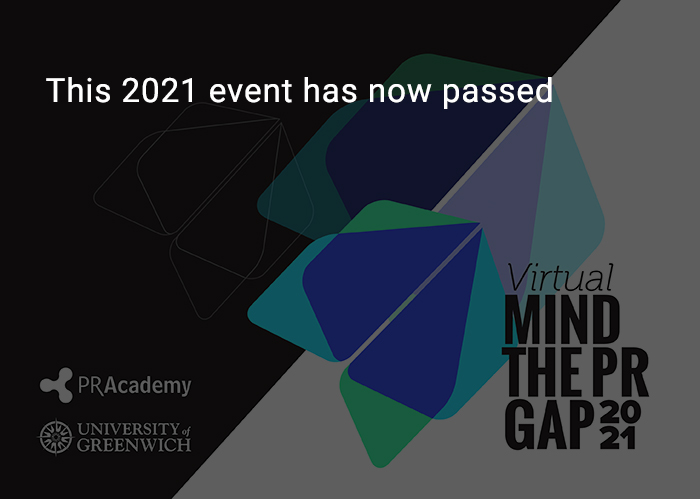Matt Peacock: ‘CSR is 20 years past its sell-by date’

About the author
Richard Bailey Hon FCIPR is editor of PR Academy's PR Place Insights. He teaches and assesses undergraduate, postgraduate and professional students.

Matt Peacock is speaking on purpose on day one of Mind The PR Gap conference next week. This former BBC correspondent who spent 21 years in corporate comms is now a consultant with Blurred which he describes as an ESG management consultancy as well as a comms consultancy. ‘I’m an ESG specialist who started out in comms’ he tells me.
He was keen to talk on purpose, but also to argue that work on purpose needs to follow work on environmental, social and governance (ESG) risk assessment.
‘The first thing we need to understand is what we mean by purpose – it’s unfortunately a much abused term in corporate life already. Purpose is quite simply the net positive impact on people and planet.
‘Companies exist to make money, but profit alone is not a purpose just as my purpose as a human being is not simply to breathe. So understanding the role of the business in making a genuine positive contribution to society and the world around it through its core reason for existing as a commercial entity is the route to understanding what purpose really is.
‘Companies that have a very clear sense of what their purpose is – why they exist, what their mission is, how their commercial goals and financial objectives align with societal expectations – tend to be companies that perform very well in ESG. They tend to be companies that are more highly rated overall across a whole swathe of investor metrics.
‘There’s something about the exercise of forcing the leadership team to look inside itself and ask itself very difficult questions about why it exists and what its net contribution to the world outside it is through its core business – not through CSR which is 20 years past its sell-by date. The act of having those conversations intrinsically begins to build a better business.’
‘It’s the same conversation whether you’re in-house or a consultant. In all the roles I’ve had in-house, the board and the executive committee were my client. The same constraints and opportunities arise whether you’re an external or an internal adviser. Change takes time, it relies on consensus, it requires compromise. Most importantly, nothing will work unless it goes with the grain of the business.’
‘Change is always incremental in nature. Understanding the commercial context and the culture of the business and going with that can lead to change by stealth.’
ESG and purpose are a continuum. It’s impossible to have the conversation about purpose without first having a conversation about ESG. At Blurred, we talk about ESG-P.
‘The mistake that huge numbers of companies make is that the conversation begins with the P rather than beginning with the E, the S and the G.
‘Brand and advertising agencies are falling over themselves to position themselves as purpose agencies. But purpose is not the 20 or 30 words you put on a PowerPoint slide. It’s not just an advertising strapline. It’s not about looking better, it’s about being better.
‘While Blurred is a comms consultancy, we’re also an ESG management consultancy doing the technical detail on every aspect of the E, the S and the G. Only when you have the true picture on ESG risk can you start to work on a narrative that articulates their purpose.’
On stakeholders and risk management
‘A stakeholder map is another thing that’s past its sell-by date, because a stakeholder map looks at the challenge from the wrong end of the telescope. The traditional view on risk is ‘here’s the company in the centre and risk is something bad could happen to it in the short term’. The stakeholders are the people who cause the risk.
‘ESG is the complete inverse of that; it flips the risk management model. It says ‘here’s the company at the centre, and what are the bad things the company could do to the world around it, over a five to ten year time frame (or 10 to 20 years in the case of climate). So instead of focusing on audience segments who need to be stroked or spun to, you need to ask ‘in what way could our company harm people or harm the planet?’ In other words, you switch from being audience based and short-term risk based in your thinking, to being impact based and long-term in your thinking.
‘That’s not to say that the stakeholder map doesn’t have a role, but it’s a tactical tool.’
‘The tool that’s displaced the stakeholder map is the materiality matrix which assesses impact on the company and impact on the world.’
Follow these links to register for free to attend Mind The PR Gap:BOOK YOUR FREE PLACE FOR DAY ONE
Wednesday 14 July, 1300-1430
BOOK YOUR FREE PLACE FOR DAY TWO
Thursday 15 July, 1300-14.30